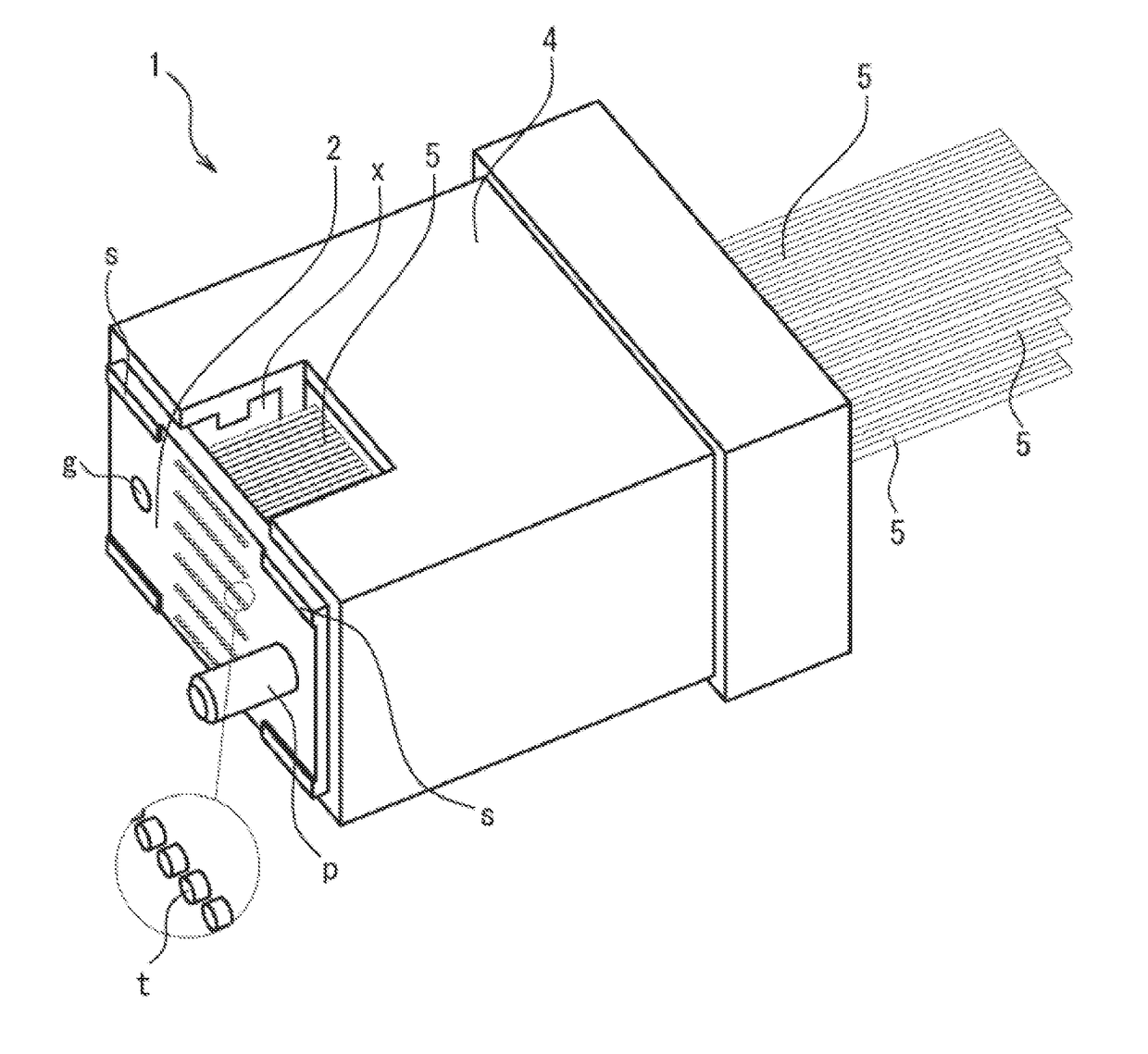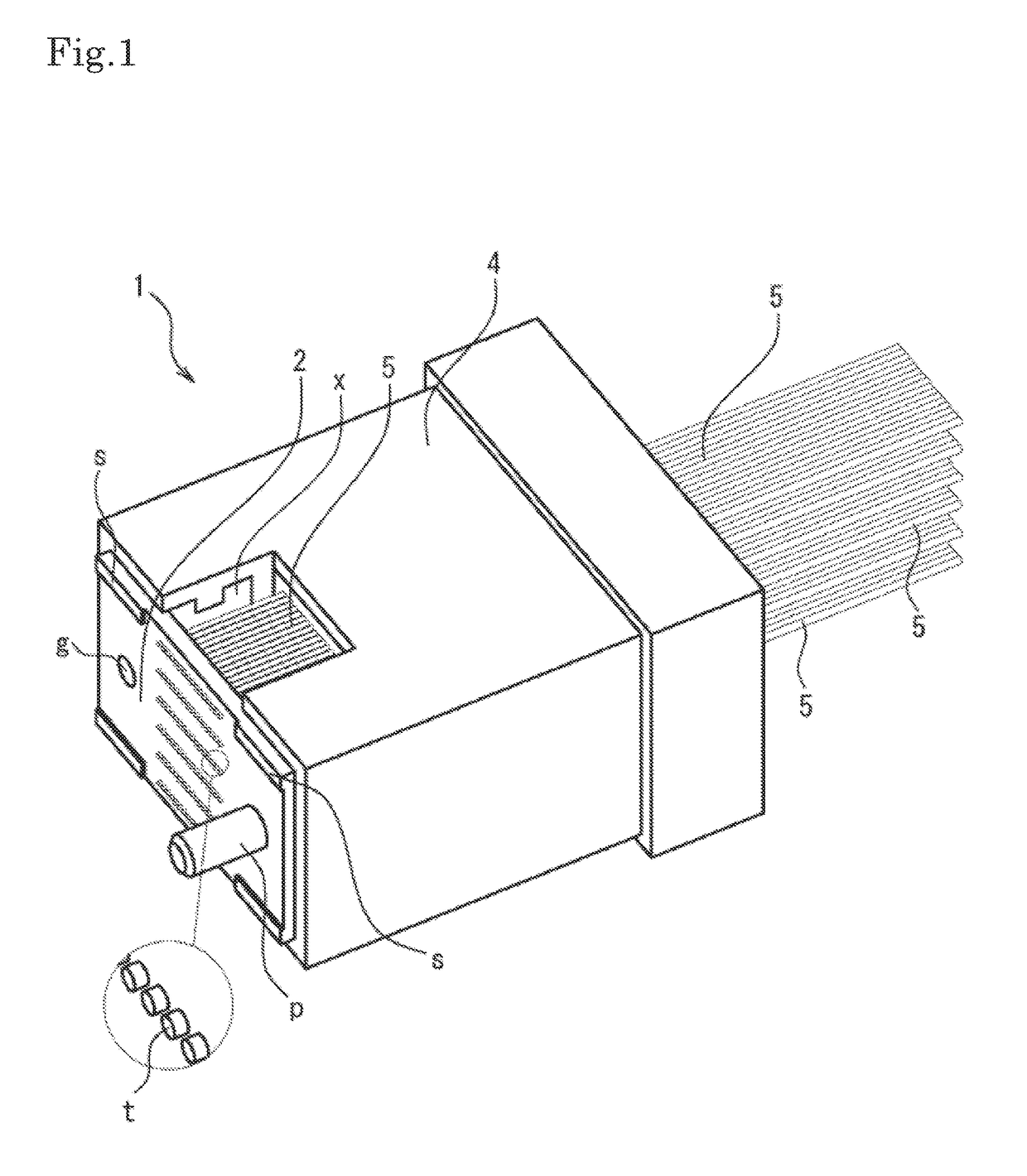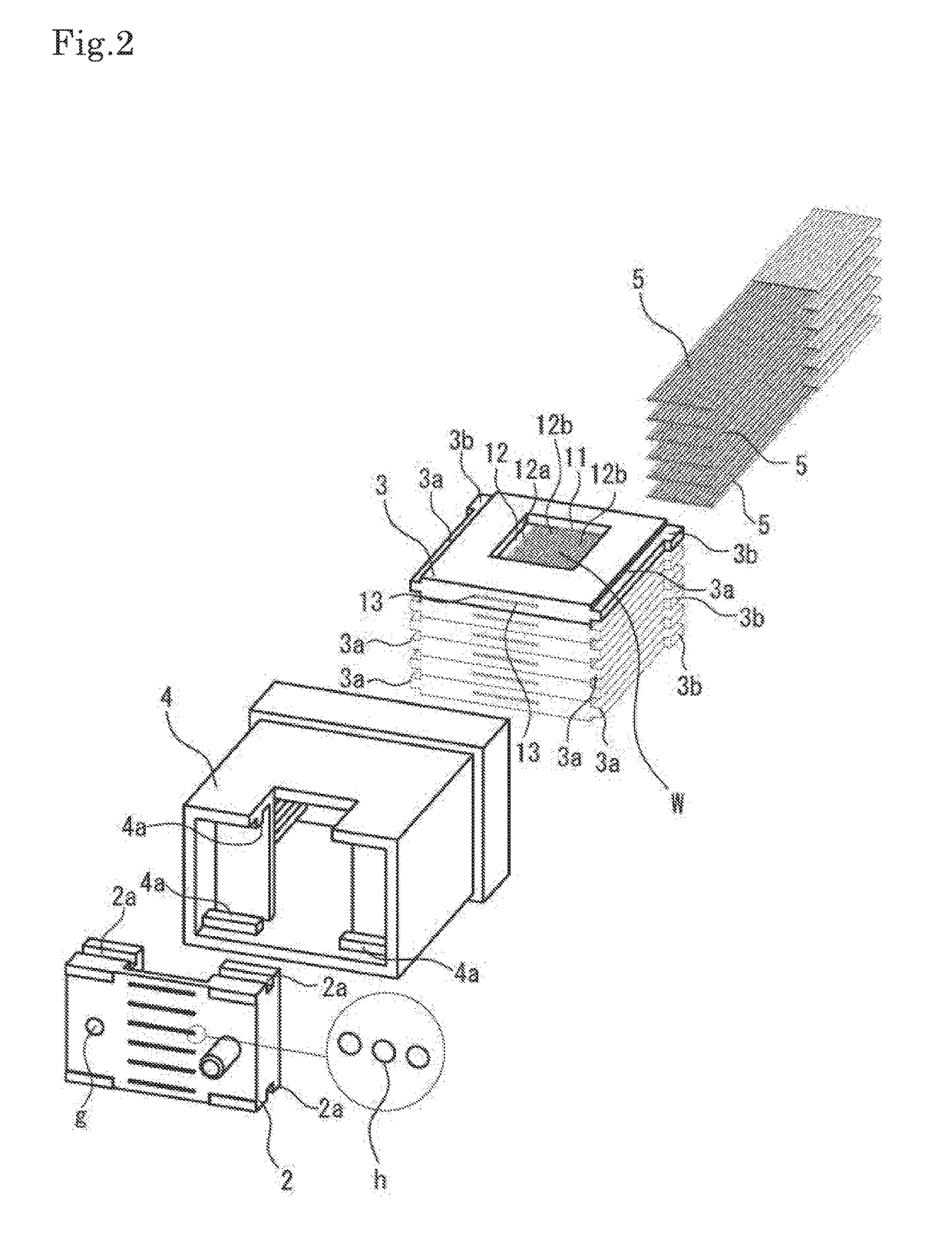Multi-fiber optical connector
a fiber optic connector and fiber technology, applied in the field of multi-fiber optical connectors, can solve the problems of low workability at the time of connecting each fiber and the need for a certain amount of fiber length, and achieve the effects of high workability, simple structure and convenient assembly
- Summary
- Abstract
- Description
- Claims
- Application Information
AI Technical Summary
Benefits of technology
Problems solved by technology
Method used
Image
Examples
Embodiment Construction
[0026]In the following, the best embodiment of the present invention will be described using FIGS. 1, 2, 3, and 4.
[0027]FIG. 1 is a perspective view of an entire multi-fiber optical connector used in the present embodiment, FIG. 2 is an exploded perspective view of the multi-fiber optical connector, FIG. 3 is a side cross-sectional explanatory view illustrating a structure inside the connector when the multi-fiber optical connector is connected, and FIG. 4 is an exploded perspective view of the multi-fiber optical connector, respectively. Note that illustration of a rear end portion of a fiber is omitted in the drawings.
[0028]As illustrated in FIGS. 1, 2, and 3, a multi-fiber optical connector 1 according to the present embodiment includes a plate-shaped guide 2, a fiber guide 3, and a holder 4, and has a structure in which a tip portion t of a fiber 5 inserted into a penetration hole h provided inside the plate-shaped guide 2 from a rear end side of the multi-fiber optical connecto...
PUM
 Login to View More
Login to View More Abstract
Description
Claims
Application Information
 Login to View More
Login to View More - R&D
- Intellectual Property
- Life Sciences
- Materials
- Tech Scout
- Unparalleled Data Quality
- Higher Quality Content
- 60% Fewer Hallucinations
Browse by: Latest US Patents, China's latest patents, Technical Efficacy Thesaurus, Application Domain, Technology Topic, Popular Technical Reports.
© 2025 PatSnap. All rights reserved.Legal|Privacy policy|Modern Slavery Act Transparency Statement|Sitemap|About US| Contact US: help@patsnap.com



